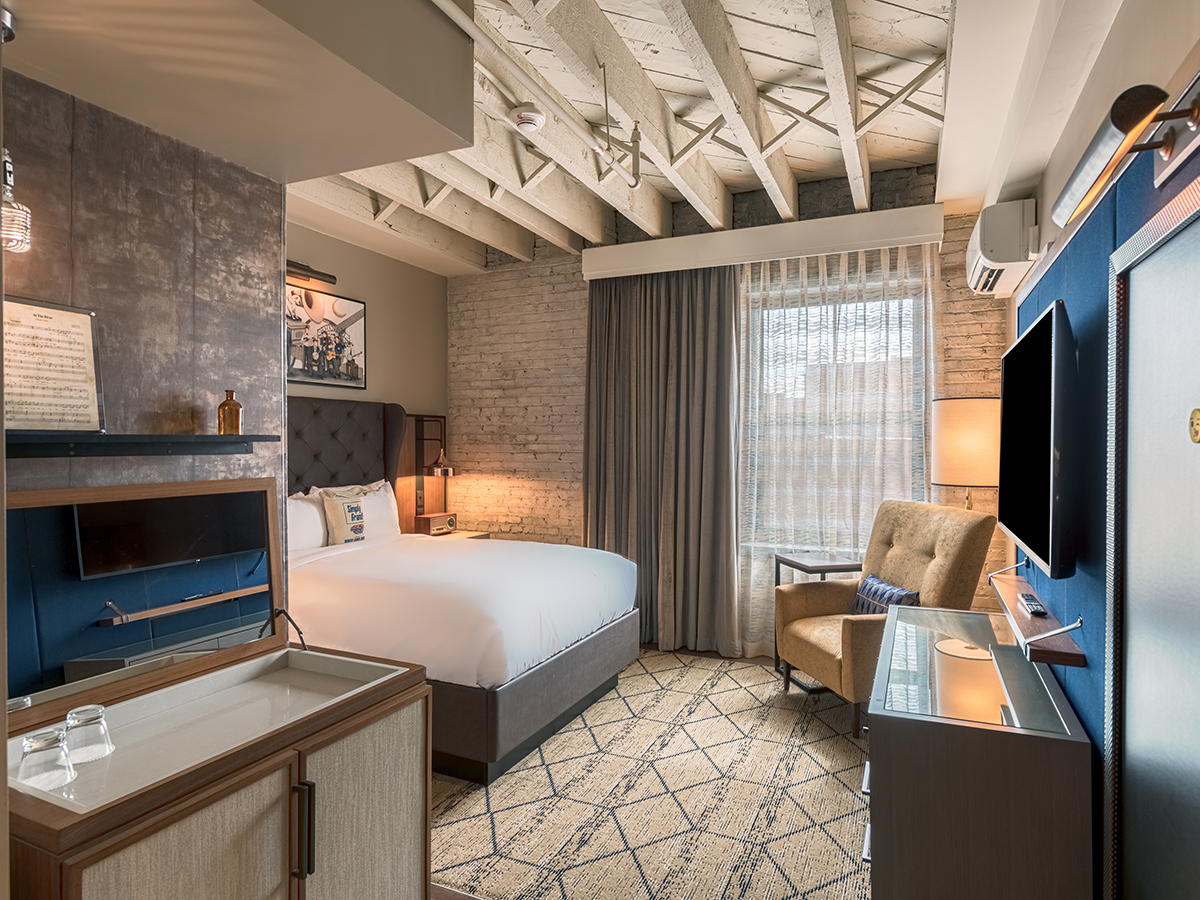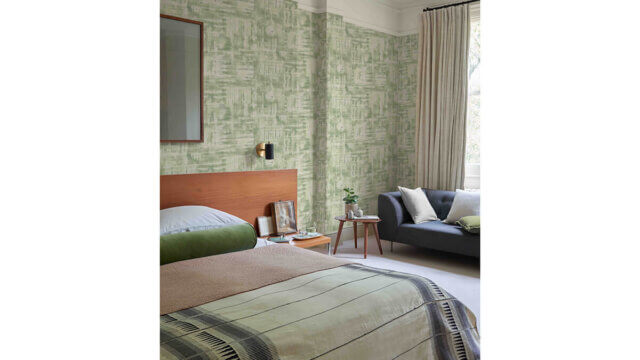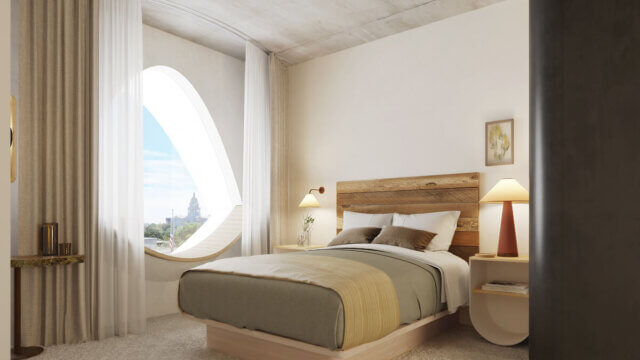Interior Image Group (IIG) has revealed The Sessions Hotel, a renovated property in Bristol, VA, that offers guests an immersive journey into the birthplace of music’s creative culture. Part of Marriott International’s Tribute Portfolio, the hotel, which initially consisted of three separate buildings—a grain mill, a candy factory and a grocery building—was transformed by IIG into one cohesive, 70-room boutique hotel that honors the property’s storied past.
“As with many adaptive-reuse projects of this size and complexity, the property took several years and several redesigns to get it just right,” said Leslie Schultz, SVP of design, IIG. “The collective project team had to work through the Historic Preservation Trust at the state and federal levels to ensure that we were in compliance with all of the rules on multiple buildings, which took time.”
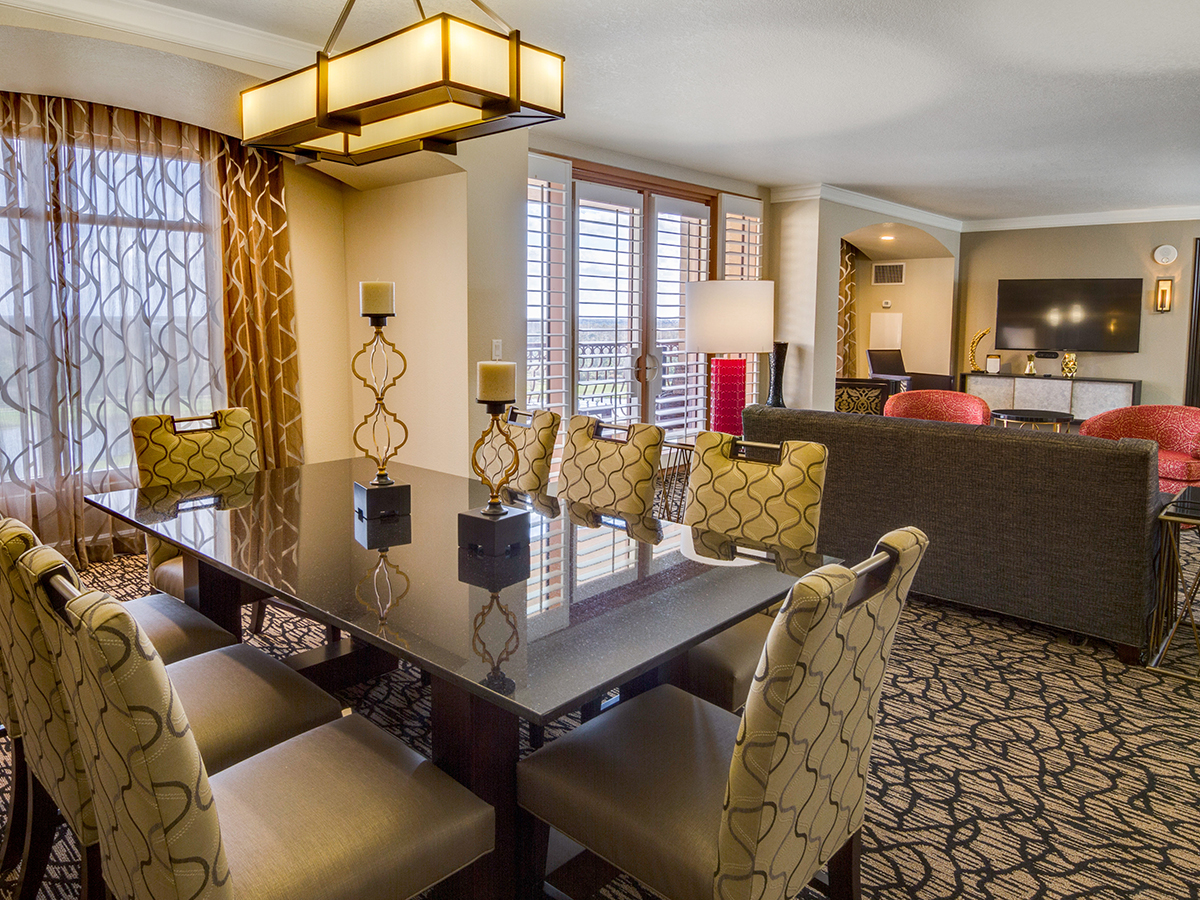
The firm was responsible for both the design and procurement for the 78,000-sq.-ft. boutique hotel’s guestrooms, corridors and main lobby. To provide travelers and locals with a grand arrival and lasting first impression, the IIG team created an eclectic design concept that mixes modern and retro themes with traditional and industrial elements, all while incorporating and celebrating the property’s rich historic roots.
“The property is centered around music, authentic experiences and extraordinary comfort. Every selection is intentional. This really is a project for the Southwest Virginia and Eastern Tennessee communities; we just had the great honor of developing it,” said Kimberly Christner, president of Cornerstone Hospitality.
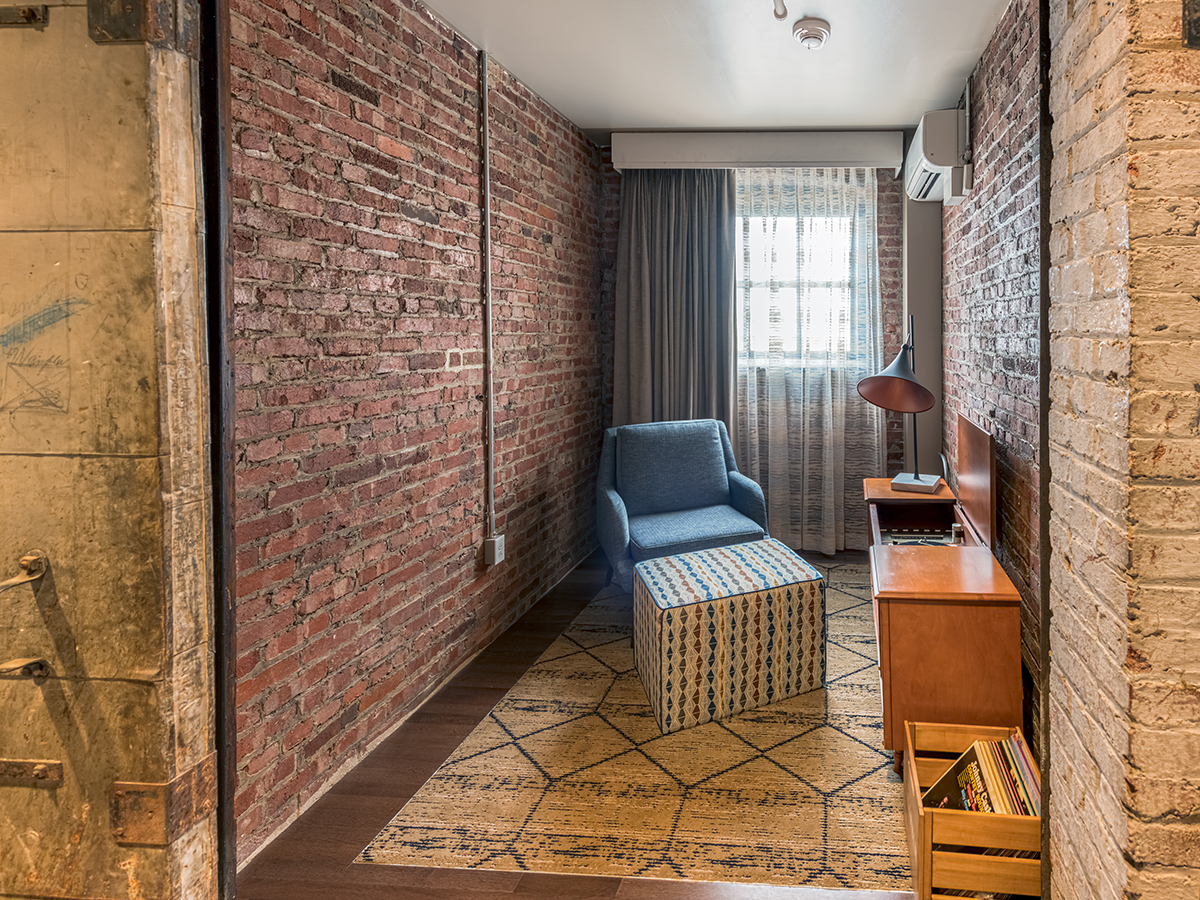
For example, the lobby showcases a working Victrola vintage record player and a gramophone art feature at the front desk to introduce the retro scheme upon entering the hotel. To honor the building’s unique history, IIG exposed and restored original materials including oak wood flooring, bricks, wood beams and an original grain silo, complementing them with touchpoints that remind guests of the recording sessions that took place long ago and the many functions each of the three buildings once served.
“We’ve taken our time and as such we’ve perfected the overall guest experience with curated art; repurposed items from the buildings, which became functional pieces; and creative and high-end amenities that serve to add to the overall experience and tell the story of the buildings and Bristol,” Christner said.
Sessions Hotel has 70 appointed guestrooms comprising eight room types—a King Standard, Queen Standard, Double Queen Standard, Queen Studio, Mill Suite, King Junior Suite, Double Queen Junior Suite and a Presidential Grand Suite. Features include Kingsdown mattresses, Gilchrist and Soames linens, Northern Feather pillows, Boca Terry bathrobes, Molton Brown toiletries, Victrola bluetooth radio and vinyl players (upon request) and pet-friendly accommodations. Guests can unlayer custom details in their rooms that pay tribute to the property’s past life, including the IIG-designed accent pillows that showcase vintage cornmeal grain sacks as well as recipes taken from the original bags used in the Simply Grand grain mill. The design team also selected denim from the LC King Denim Factory and wove it into the rooms’ casegoods to further call attention to the hotel’s historic narrative.
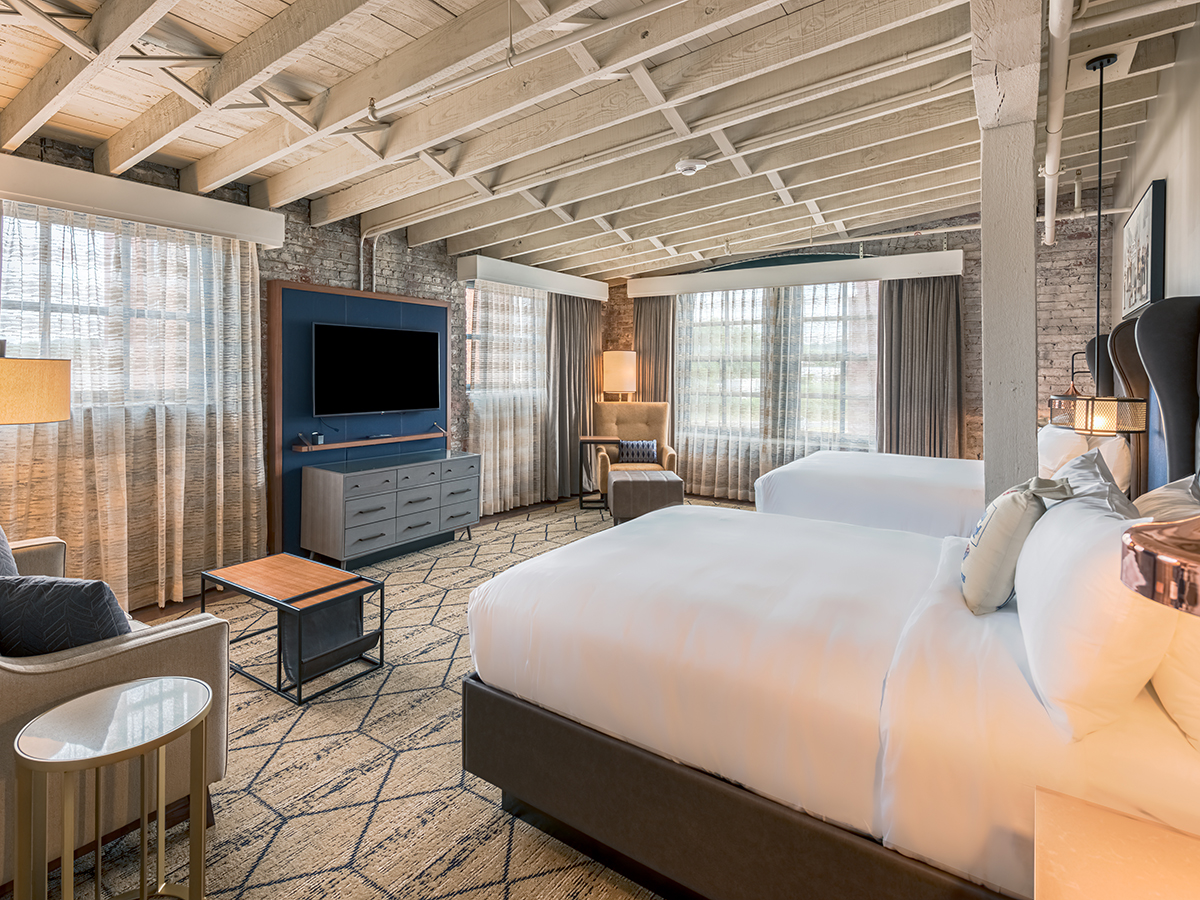

IIG also placed a heavy emphasis on engaging the local community—everyone from craftsmen to artists and manufacturers in order to further the heritage of the site. The design firm incorporated local artist Moon Bound Girl to curate original artwork that hangs over the beds and depicts the original Sessions Recordings musicians. IIG also transformed vintage microphones into lighting pendants, which suspend over a hospitality unit inspired by a vintage record player cabinet. Other custom elements in the guestrooms include LP Labels that act as the room numbers and signage that highlights record labels from the 79 recordings made during the 1929 Bristol Recording Sessions, showcasing a musician or musical group along with song lyrics that are used as the artwork, unique to each and every guestroom in the hotel.
“We thought it was important to engage the local community and local talent into the hotel and its design—there is so much to showcase and for the city to be proud of,” Schultz said. “We tried to integrate everyone from craftsmen to artists and manufacturers in order to further the heritage of the site.”
